-
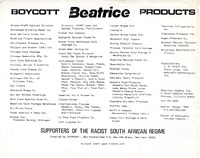 Boycott Beatrice Products, Flier.
Boycott Beatrice Products, Flier. A flier listing the different companies that fall under the ownership of business conglomerate Beatrice. The memo suggests that people boycott these companies because of South Africa’s institutionalized system of racial segregation that lasted from 1948 until the early 1990s, known as apartheid.
-
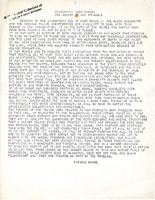 Concerning Hard Drugs: One Aspect of Our Struggle, Memo.
Concerning Hard Drugs: One Aspect of Our Struggle, Memo. A memo by Black Panther Party leader, co-founder of the Black Liberation Army, and political prisoner Dhoruba Bin Wahd (Richard Moore) arguing that it is the duty of the people to put an end to the plague of drugs in the Black community by providing no quarter for for drug profiteers since corrupt police won't do anything about the problem.
-
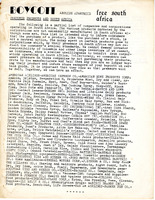 Boycott Consumer Products and South Africa: Abolish Apartheid, Memo.
Boycott Consumer Products and South Africa: Abolish Apartheid, Memo. A list of companies doing business in South Africa. The memo suggests that people boycott these companies because of apartheid, South Africa’s institutionalized system of racial segregation that lasted from 1948 until the early 1990s. The memo also suggests for people to write to the companies and speak to store managers about the boycott.
-
 Black Panther Party Rules, Eight Points of Attention, Program & Platform, Handout.
Black Panther Party Rules, Eight Points of Attention, Program & Platform, Handout. A three page handout given to members of the Black Panther Party. The sections are: Three Main Rules of Discipline; The Eight Points of Attention; Ten Point Program and Platform; and Rules of the Black Panther Party.
-
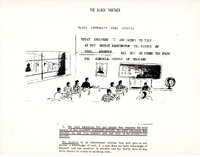 The Black Panther Black Community News Service, Political Cartoon.
The Black Panther Black Community News Service, Political Cartoon. A political cartoon featuring a pig teaching a classroom of children with the quote “Today children we are going to talk about George Washington the father of your country and how he freed you from the colonial powers of England.” The 5th point from the Black Panther Party’s Ten-Point program is printed at the bottom of the page.
-
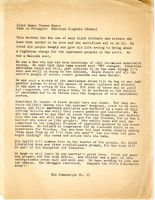 Black Liberation Army Communiqué #13, Memo.
Black Liberation Army Communiqué #13, Memo. A memo from the Black Liberation Army (BLA) eulogizing Kakoonya Olugbala (Twymon Myers) who gave his life to the struggle against oppression. He was killed in a shootout with New York Police and FBI agents on November 14, 1973 after a long manhunt (he was on the FBI’s most wanted list) because of his involvement with previous police shootings.
-
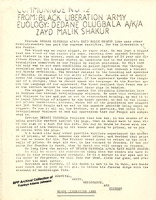 Communiqué #12 From: Black Liberation Army Eulogy: Dedane Olugbala a/k/a Zayd Malik Shakur, Memo.
Communiqué #12 From: Black Liberation Army Eulogy: Dedane Olugbala a/k/a Zayd Malik Shakur, Memo. A memo from the Ungamana Tribe of the Black Liberation Army (BLA) eulogizing Dedane Olugbala a/k/a Zayd Malik Shakur, a BLA member who was killed by the police on May 2, 1973. He was minister of information of the New York Black Panther Party. The memo states that the time has come for retaliation against racist police violence.
-
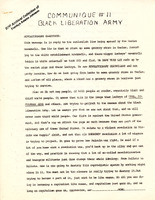 Communiqué #11 From The Black Liberation Army, Memo.
Communiqué #11 From The Black Liberation Army, Memo. A memo from the Black Liberation Army (BLA) countering lies spread by the media about BLA committing crimes like robbing a grocery store in Harlem for $80 and randomly murdering people. The author writes that the BLA are revolutionary guerillas, not criminals and lists some of the things they take credit for: killing police, robbing banks, etc.
-
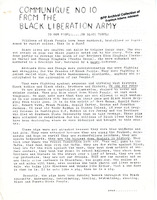 Communiqué #10 From The Black Liberation Army, Memo.
Communiqué #10 From The Black Liberation Army, Memo. A memo from the Black Liberation Army (BLA) explaining recent killings of cops and outlining ways the people can fight back against different oppressors. The author writes that police officers are capitalist’s henchmen and gives examples and names of people in the Black community who have been murdered by the police.
-
 Black Liberation Army Memo to the Guardians Association, Memo.
Black Liberation Army Memo to the Guardians Association, Memo. A memo from the Black Liberation Army (BLA) to the Guardians Association. The memo explains the BLA's stance on killing police and pleads with Black police officers to no longer side with their white counterparts. The Guardian’s Association is a fraternal organization primarily composed of Black law enforcement officers.
-
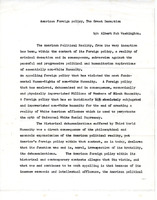 A paper titled American Foreign Policy: The Great Deception.
A paper titled American Foreign Policy: The Great Deception. A paper by Albert Nuh Washington (Nuh Abdul Qaiyum) arguing that America's foreign policy serves the larger function of the subjugation of non-white people in the United States. Nuh Abdul Qaiyum was sentenced to prison in 1975 for a 1971 Black Liberation Army (BLA) connected shooting of police officers in New York,
-
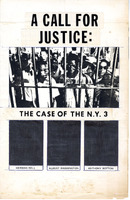 A Call for Justice: The Case of the N.Y. 3, Flier.
A Call for Justice: The Case of the N.Y. 3, Flier. A handmade flier with a picture of prisoners behind bars. The pictures of Herman Bell, Albert Washington, and Anthony Bottom have been blacked out. The three men, known as the New York 3, were Black Panther Party and Black Liberation Army (BLA) members who were arrested and convicted of the May 21, 1971, killing of two police officers in Harlem.
-
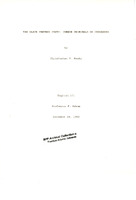 A paper titled The Black Panther Party: Crusaders or Criminals.
A paper titled The Black Panther Party: Crusaders or Criminals. A paper by a student in Frankye Adams-Johnson (Malika)'s English 101 class about the history of the Black Panther Party. The author argues that the members of the Black Panther Party were not born revolutionaries, but were forced into this mind set by the oppressive ways of American society and deemed all of their actions necessary for liberation.
-
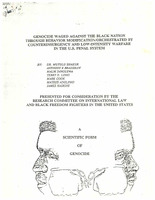 A paper titled Genocide Waged Against the Black Nation Through Beahvior Modification/Orchestrated by Counterinsurgency and Low-Intensity Warfare in the U.S. Penal System.
A paper titled Genocide Waged Against the Black Nation Through Beahvior Modification/Orchestrated by Counterinsurgency and Low-Intensity Warfare in the U.S. Penal System. A paper by a team of Black prisoners who experienced behavior modification in prison. In this paper they argue that Black prisoners being given behavior modification is a form of genocide against Black people. The paper was presented for consideration by the Research Committee on International Law and Black Freedom Fighters in the United States.
-
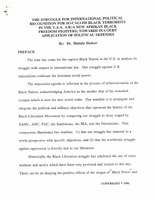 A paper titled The Struggle for International Political Recognition for So-Called Freedom Fighters in the U.S.A. aka New Afrikan Black Freedom Fighters: Towards in Court Applications of Political Defenses.
A paper titled The Struggle for International Political Recognition for So-Called Freedom Fighters in the U.S.A. aka New Afrikan Black Freedom Fighters: Towards in Court Applications of Political Defenses. A paper by Dr. Mutulu Shakur arguing that the Black nation in the imperialistic United States is a captive nation and thus must look at the situation and solutions through the lens of international law. Dr. Shakur wrote this from prison, where he was serving a 60 year sentence for his role in a Black Liberation Army (BLA) led robbery in 1981.
-
 Some Questions of Ideological Strategy of Building Mass Armed Resistance for National Liberation and Socialism Inside the U.S., Essay.
Some Questions of Ideological Strategy of Building Mass Armed Resistance for National Liberation and Socialism Inside the U.S., Essay. An essay about the Black Liberation Army (BLA) and the need for politically mobilizing an armed populace toward the collective goal of Marxism-Socialism-Leninism in America. The author writes that the BLA must do a better job of organizing the Black working class to achieve liberation and socialism.
-
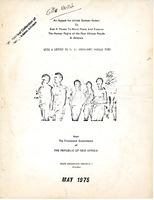 A Collection of Republic of New Africa Documents, Part 1.
A Collection of Republic of New Africa Documents, Part 1. A Collection of Republic of New Africa Documents intended to persuade the United Nations to recognize the Republic of New Africa (RNA). The RNA was founded in 1968 as a Black nationalist and Black Separatist movement. The documents include maps of the RNA, a memorandum to the United Nations, and a letter to President Gerald Ford.
-
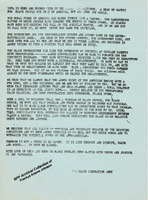 Black Liberation Army Directive (BLA) from 1974.
Black Liberation Army Directive (BLA) from 1974. A directive from the Black Liberation Army (BLA) calling Black people in the United States to organize against the white power complex. The author writes that the end of the American empire is near and that the BLA will aid any programs that are for Black people, by Black people, including forcing corporations to contribute goods to the cause.
-
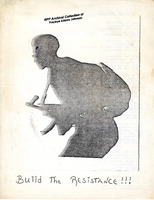 A poem by Ndugu Al-Jamil titled Build the Resistance!
A poem by Ndugu Al-Jamil titled Build the Resistance! A poem by Ndugu Al-Jamil titled “Build the Resistance!” The cover page features the silhouette of an armed man appearing ready for combat. The poem is a call to arms for revolutionaries that outlines the problems facing the community such as police brutality, taxes, eviction, health care, education, and more.
-
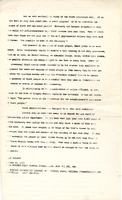 Black Panther Party New York City Press Release.
Black Panther Party New York City Press Release. A press release from the Black Panther Party Central Headquarters in New York City about recent acts of police brutality and the response of the Black Liberation Army (BLA). The author writes that the recent assassinations of New York police officers is a direct response to the amount of police brutality that goes unnoticed and unpunished.
-
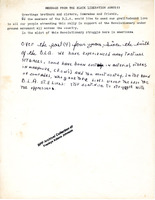 Message from the Black Liberation Army (BLA) to people attending a rally in support of revolution.
Message from the Black Liberation Army (BLA) to people attending a rally in support of revolution. Brief greetings given on behalf of the Black Liberation Army (BLA) to people attending a rally in support of revolution. With handwritten notes by Frankye Adams-Johnson (Malika) about some of the tactical setbacks the BLA has experienced, the most costly of which being the loss of people who gave their lives to the struggle.
-
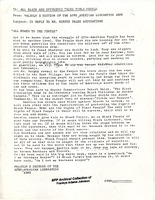 Letter to All Black and Oppressed Third World People from the Malcolm X Section of the Afro-American Liberation Army, Unknown Date.
Letter to All Black and Oppressed Third World People from the Malcolm X Section of the Afro-American Liberation Army, Unknown Date. A letter addressed to “All Black and Oppressed Third World People” from the Malcolm X Section of the Afro-American Liberation Army. The letter is a call for Black people to take up arms and take their freedom from America, even if that means “killing those who stand between us and the oppressor”
-
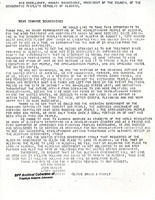 Letter to Houari Boumediene from Black Liberation Army (BLA) Members, 1972.
Letter to Houari Boumediene from Black Liberation Army (BLA) Members, 1972. A letter to Algerian president Houari Boumediene from members of the Black Liberation Army (BLA) who had fled to his country from the United States. Melvin McNair, Jean McNair, Larry Burgess, and George Brown hijacked a plane in Miami on July 31, 1972 to seek political asylum in Algeria. The letter talks about their treatment in the country.
-
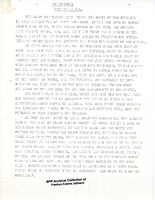 Communiques From the B.L.A., Memo.
Communiques From the B.L.A., Memo. A communique from the Black Liberation Army (BLA) mourning the deaths of BLA members Anthony "Kimu" White and Woody Greene who were both killed by police. The author argues that the racist American system caused this to happen and that the spirits of White and Greene will live on in the new BLA assault teams to be named in their honor.
-
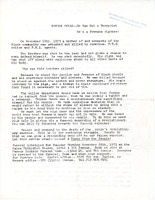 Tymon Myers-He Was Not a Terrorist He's a Freedom Fighter!, Memo.
Tymon Myers-He Was Not a Terrorist He's a Freedom Fighter!, Memo. A cover photograph from the Court News Section of the newspaper The Home News featuring members of the defense team for Assata Shakur (JoAnne Chesimard) who was on trial for the 1973 killing of a state trooper. Shakur was convicted in 1977 of killing the state trooper during a shootout, escaped prison in 1979, and is still wanted by the FBI.
 Boycott Beatrice Products, Flier. A flier listing the different companies that fall under the ownership of business conglomerate Beatrice. The memo suggests that people boycott these companies because of South Africa’s institutionalized system of racial segregation that lasted from 1948 until the early 1990s, known as apartheid.
Boycott Beatrice Products, Flier. A flier listing the different companies that fall under the ownership of business conglomerate Beatrice. The memo suggests that people boycott these companies because of South Africa’s institutionalized system of racial segregation that lasted from 1948 until the early 1990s, known as apartheid. Concerning Hard Drugs: One Aspect of Our Struggle, Memo. A memo by Black Panther Party leader, co-founder of the Black Liberation Army, and political prisoner Dhoruba Bin Wahd (Richard Moore) arguing that it is the duty of the people to put an end to the plague of drugs in the Black community by providing no quarter for for drug profiteers since corrupt police won't do anything about the problem.
Concerning Hard Drugs: One Aspect of Our Struggle, Memo. A memo by Black Panther Party leader, co-founder of the Black Liberation Army, and political prisoner Dhoruba Bin Wahd (Richard Moore) arguing that it is the duty of the people to put an end to the plague of drugs in the Black community by providing no quarter for for drug profiteers since corrupt police won't do anything about the problem. Boycott Consumer Products and South Africa: Abolish Apartheid, Memo. A list of companies doing business in South Africa. The memo suggests that people boycott these companies because of apartheid, South Africa’s institutionalized system of racial segregation that lasted from 1948 until the early 1990s. The memo also suggests for people to write to the companies and speak to store managers about the boycott.
Boycott Consumer Products and South Africa: Abolish Apartheid, Memo. A list of companies doing business in South Africa. The memo suggests that people boycott these companies because of apartheid, South Africa’s institutionalized system of racial segregation that lasted from 1948 until the early 1990s. The memo also suggests for people to write to the companies and speak to store managers about the boycott. Black Panther Party Rules, Eight Points of Attention, Program & Platform, Handout. A three page handout given to members of the Black Panther Party. The sections are: Three Main Rules of Discipline; The Eight Points of Attention; Ten Point Program and Platform; and Rules of the Black Panther Party.
Black Panther Party Rules, Eight Points of Attention, Program & Platform, Handout. A three page handout given to members of the Black Panther Party. The sections are: Three Main Rules of Discipline; The Eight Points of Attention; Ten Point Program and Platform; and Rules of the Black Panther Party. The Black Panther Black Community News Service, Political Cartoon. A political cartoon featuring a pig teaching a classroom of children with the quote “Today children we are going to talk about George Washington the father of your country and how he freed you from the colonial powers of England.” The 5th point from the Black Panther Party’s Ten-Point program is printed at the bottom of the page.
The Black Panther Black Community News Service, Political Cartoon. A political cartoon featuring a pig teaching a classroom of children with the quote “Today children we are going to talk about George Washington the father of your country and how he freed you from the colonial powers of England.” The 5th point from the Black Panther Party’s Ten-Point program is printed at the bottom of the page. Black Liberation Army Communiqué #13, Memo. A memo from the Black Liberation Army (BLA) eulogizing Kakoonya Olugbala (Twymon Myers) who gave his life to the struggle against oppression. He was killed in a shootout with New York Police and FBI agents on November 14, 1973 after a long manhunt (he was on the FBI’s most wanted list) because of his involvement with previous police shootings.
Black Liberation Army Communiqué #13, Memo. A memo from the Black Liberation Army (BLA) eulogizing Kakoonya Olugbala (Twymon Myers) who gave his life to the struggle against oppression. He was killed in a shootout with New York Police and FBI agents on November 14, 1973 after a long manhunt (he was on the FBI’s most wanted list) because of his involvement with previous police shootings. Communiqué #12 From: Black Liberation Army Eulogy: Dedane Olugbala a/k/a Zayd Malik Shakur, Memo. A memo from the Ungamana Tribe of the Black Liberation Army (BLA) eulogizing Dedane Olugbala a/k/a Zayd Malik Shakur, a BLA member who was killed by the police on May 2, 1973. He was minister of information of the New York Black Panther Party. The memo states that the time has come for retaliation against racist police violence.
Communiqué #12 From: Black Liberation Army Eulogy: Dedane Olugbala a/k/a Zayd Malik Shakur, Memo. A memo from the Ungamana Tribe of the Black Liberation Army (BLA) eulogizing Dedane Olugbala a/k/a Zayd Malik Shakur, a BLA member who was killed by the police on May 2, 1973. He was minister of information of the New York Black Panther Party. The memo states that the time has come for retaliation against racist police violence. Communiqué #11 From The Black Liberation Army, Memo. A memo from the Black Liberation Army (BLA) countering lies spread by the media about BLA committing crimes like robbing a grocery store in Harlem for $80 and randomly murdering people. The author writes that the BLA are revolutionary guerillas, not criminals and lists some of the things they take credit for: killing police, robbing banks, etc.
Communiqué #11 From The Black Liberation Army, Memo. A memo from the Black Liberation Army (BLA) countering lies spread by the media about BLA committing crimes like robbing a grocery store in Harlem for $80 and randomly murdering people. The author writes that the BLA are revolutionary guerillas, not criminals and lists some of the things they take credit for: killing police, robbing banks, etc. Communiqué #10 From The Black Liberation Army, Memo. A memo from the Black Liberation Army (BLA) explaining recent killings of cops and outlining ways the people can fight back against different oppressors. The author writes that police officers are capitalist’s henchmen and gives examples and names of people in the Black community who have been murdered by the police.
Communiqué #10 From The Black Liberation Army, Memo. A memo from the Black Liberation Army (BLA) explaining recent killings of cops and outlining ways the people can fight back against different oppressors. The author writes that police officers are capitalist’s henchmen and gives examples and names of people in the Black community who have been murdered by the police. Black Liberation Army Memo to the Guardians Association, Memo. A memo from the Black Liberation Army (BLA) to the Guardians Association. The memo explains the BLA's stance on killing police and pleads with Black police officers to no longer side with their white counterparts. The Guardian’s Association is a fraternal organization primarily composed of Black law enforcement officers.
Black Liberation Army Memo to the Guardians Association, Memo. A memo from the Black Liberation Army (BLA) to the Guardians Association. The memo explains the BLA's stance on killing police and pleads with Black police officers to no longer side with their white counterparts. The Guardian’s Association is a fraternal organization primarily composed of Black law enforcement officers. A paper titled American Foreign Policy: The Great Deception. A paper by Albert Nuh Washington (Nuh Abdul Qaiyum) arguing that America's foreign policy serves the larger function of the subjugation of non-white people in the United States. Nuh Abdul Qaiyum was sentenced to prison in 1975 for a 1971 Black Liberation Army (BLA) connected shooting of police officers in New York,
A paper titled American Foreign Policy: The Great Deception. A paper by Albert Nuh Washington (Nuh Abdul Qaiyum) arguing that America's foreign policy serves the larger function of the subjugation of non-white people in the United States. Nuh Abdul Qaiyum was sentenced to prison in 1975 for a 1971 Black Liberation Army (BLA) connected shooting of police officers in New York, A Call for Justice: The Case of the N.Y. 3, Flier. A handmade flier with a picture of prisoners behind bars. The pictures of Herman Bell, Albert Washington, and Anthony Bottom have been blacked out. The three men, known as the New York 3, were Black Panther Party and Black Liberation Army (BLA) members who were arrested and convicted of the May 21, 1971, killing of two police officers in Harlem.
A Call for Justice: The Case of the N.Y. 3, Flier. A handmade flier with a picture of prisoners behind bars. The pictures of Herman Bell, Albert Washington, and Anthony Bottom have been blacked out. The three men, known as the New York 3, were Black Panther Party and Black Liberation Army (BLA) members who were arrested and convicted of the May 21, 1971, killing of two police officers in Harlem. A paper titled The Black Panther Party: Crusaders or Criminals. A paper by a student in Frankye Adams-Johnson (Malika)'s English 101 class about the history of the Black Panther Party. The author argues that the members of the Black Panther Party were not born revolutionaries, but were forced into this mind set by the oppressive ways of American society and deemed all of their actions necessary for liberation.
A paper titled The Black Panther Party: Crusaders or Criminals. A paper by a student in Frankye Adams-Johnson (Malika)'s English 101 class about the history of the Black Panther Party. The author argues that the members of the Black Panther Party were not born revolutionaries, but were forced into this mind set by the oppressive ways of American society and deemed all of their actions necessary for liberation. A paper titled Genocide Waged Against the Black Nation Through Beahvior Modification/Orchestrated by Counterinsurgency and Low-Intensity Warfare in the U.S. Penal System. A paper by a team of Black prisoners who experienced behavior modification in prison. In this paper they argue that Black prisoners being given behavior modification is a form of genocide against Black people. The paper was presented for consideration by the Research Committee on International Law and Black Freedom Fighters in the United States.
A paper titled Genocide Waged Against the Black Nation Through Beahvior Modification/Orchestrated by Counterinsurgency and Low-Intensity Warfare in the U.S. Penal System. A paper by a team of Black prisoners who experienced behavior modification in prison. In this paper they argue that Black prisoners being given behavior modification is a form of genocide against Black people. The paper was presented for consideration by the Research Committee on International Law and Black Freedom Fighters in the United States. A paper titled The Struggle for International Political Recognition for So-Called Freedom Fighters in the U.S.A. aka New Afrikan Black Freedom Fighters: Towards in Court Applications of Political Defenses. A paper by Dr. Mutulu Shakur arguing that the Black nation in the imperialistic United States is a captive nation and thus must look at the situation and solutions through the lens of international law. Dr. Shakur wrote this from prison, where he was serving a 60 year sentence for his role in a Black Liberation Army (BLA) led robbery in 1981.
A paper titled The Struggle for International Political Recognition for So-Called Freedom Fighters in the U.S.A. aka New Afrikan Black Freedom Fighters: Towards in Court Applications of Political Defenses. A paper by Dr. Mutulu Shakur arguing that the Black nation in the imperialistic United States is a captive nation and thus must look at the situation and solutions through the lens of international law. Dr. Shakur wrote this from prison, where he was serving a 60 year sentence for his role in a Black Liberation Army (BLA) led robbery in 1981. Some Questions of Ideological Strategy of Building Mass Armed Resistance for National Liberation and Socialism Inside the U.S., Essay. An essay about the Black Liberation Army (BLA) and the need for politically mobilizing an armed populace toward the collective goal of Marxism-Socialism-Leninism in America. The author writes that the BLA must do a better job of organizing the Black working class to achieve liberation and socialism.
Some Questions of Ideological Strategy of Building Mass Armed Resistance for National Liberation and Socialism Inside the U.S., Essay. An essay about the Black Liberation Army (BLA) and the need for politically mobilizing an armed populace toward the collective goal of Marxism-Socialism-Leninism in America. The author writes that the BLA must do a better job of organizing the Black working class to achieve liberation and socialism. A Collection of Republic of New Africa Documents, Part 1. A Collection of Republic of New Africa Documents intended to persuade the United Nations to recognize the Republic of New Africa (RNA). The RNA was founded in 1968 as a Black nationalist and Black Separatist movement. The documents include maps of the RNA, a memorandum to the United Nations, and a letter to President Gerald Ford.
A Collection of Republic of New Africa Documents, Part 1. A Collection of Republic of New Africa Documents intended to persuade the United Nations to recognize the Republic of New Africa (RNA). The RNA was founded in 1968 as a Black nationalist and Black Separatist movement. The documents include maps of the RNA, a memorandum to the United Nations, and a letter to President Gerald Ford. Black Liberation Army Directive (BLA) from 1974. A directive from the Black Liberation Army (BLA) calling Black people in the United States to organize against the white power complex. The author writes that the end of the American empire is near and that the BLA will aid any programs that are for Black people, by Black people, including forcing corporations to contribute goods to the cause.
Black Liberation Army Directive (BLA) from 1974. A directive from the Black Liberation Army (BLA) calling Black people in the United States to organize against the white power complex. The author writes that the end of the American empire is near and that the BLA will aid any programs that are for Black people, by Black people, including forcing corporations to contribute goods to the cause. A poem by Ndugu Al-Jamil titled Build the Resistance! A poem by Ndugu Al-Jamil titled “Build the Resistance!” The cover page features the silhouette of an armed man appearing ready for combat. The poem is a call to arms for revolutionaries that outlines the problems facing the community such as police brutality, taxes, eviction, health care, education, and more.
A poem by Ndugu Al-Jamil titled Build the Resistance! A poem by Ndugu Al-Jamil titled “Build the Resistance!” The cover page features the silhouette of an armed man appearing ready for combat. The poem is a call to arms for revolutionaries that outlines the problems facing the community such as police brutality, taxes, eviction, health care, education, and more. Black Panther Party New York City Press Release. A press release from the Black Panther Party Central Headquarters in New York City about recent acts of police brutality and the response of the Black Liberation Army (BLA). The author writes that the recent assassinations of New York police officers is a direct response to the amount of police brutality that goes unnoticed and unpunished.
Black Panther Party New York City Press Release. A press release from the Black Panther Party Central Headquarters in New York City about recent acts of police brutality and the response of the Black Liberation Army (BLA). The author writes that the recent assassinations of New York police officers is a direct response to the amount of police brutality that goes unnoticed and unpunished. Message from the Black Liberation Army (BLA) to people attending a rally in support of revolution. Brief greetings given on behalf of the Black Liberation Army (BLA) to people attending a rally in support of revolution. With handwritten notes by Frankye Adams-Johnson (Malika) about some of the tactical setbacks the BLA has experienced, the most costly of which being the loss of people who gave their lives to the struggle.
Message from the Black Liberation Army (BLA) to people attending a rally in support of revolution. Brief greetings given on behalf of the Black Liberation Army (BLA) to people attending a rally in support of revolution. With handwritten notes by Frankye Adams-Johnson (Malika) about some of the tactical setbacks the BLA has experienced, the most costly of which being the loss of people who gave their lives to the struggle. Letter to All Black and Oppressed Third World People from the Malcolm X Section of the Afro-American Liberation Army, Unknown Date. A letter addressed to “All Black and Oppressed Third World People” from the Malcolm X Section of the Afro-American Liberation Army. The letter is a call for Black people to take up arms and take their freedom from America, even if that means “killing those who stand between us and the oppressor”
Letter to All Black and Oppressed Third World People from the Malcolm X Section of the Afro-American Liberation Army, Unknown Date. A letter addressed to “All Black and Oppressed Third World People” from the Malcolm X Section of the Afro-American Liberation Army. The letter is a call for Black people to take up arms and take their freedom from America, even if that means “killing those who stand between us and the oppressor” Letter to Houari Boumediene from Black Liberation Army (BLA) Members, 1972. A letter to Algerian president Houari Boumediene from members of the Black Liberation Army (BLA) who had fled to his country from the United States. Melvin McNair, Jean McNair, Larry Burgess, and George Brown hijacked a plane in Miami on July 31, 1972 to seek political asylum in Algeria. The letter talks about their treatment in the country.
Letter to Houari Boumediene from Black Liberation Army (BLA) Members, 1972. A letter to Algerian president Houari Boumediene from members of the Black Liberation Army (BLA) who had fled to his country from the United States. Melvin McNair, Jean McNair, Larry Burgess, and George Brown hijacked a plane in Miami on July 31, 1972 to seek political asylum in Algeria. The letter talks about their treatment in the country. Communiques From the B.L.A., Memo. A communique from the Black Liberation Army (BLA) mourning the deaths of BLA members Anthony "Kimu" White and Woody Greene who were both killed by police. The author argues that the racist American system caused this to happen and that the spirits of White and Greene will live on in the new BLA assault teams to be named in their honor.
Communiques From the B.L.A., Memo. A communique from the Black Liberation Army (BLA) mourning the deaths of BLA members Anthony "Kimu" White and Woody Greene who were both killed by police. The author argues that the racist American system caused this to happen and that the spirits of White and Greene will live on in the new BLA assault teams to be named in their honor. Tymon Myers-He Was Not a Terrorist He's a Freedom Fighter!, Memo. A cover photograph from the Court News Section of the newspaper The Home News featuring members of the defense team for Assata Shakur (JoAnne Chesimard) who was on trial for the 1973 killing of a state trooper. Shakur was convicted in 1977 of killing the state trooper during a shootout, escaped prison in 1979, and is still wanted by the FBI.
Tymon Myers-He Was Not a Terrorist He's a Freedom Fighter!, Memo. A cover photograph from the Court News Section of the newspaper The Home News featuring members of the defense team for Assata Shakur (JoAnne Chesimard) who was on trial for the 1973 killing of a state trooper. Shakur was convicted in 1977 of killing the state trooper during a shootout, escaped prison in 1979, and is still wanted by the FBI.